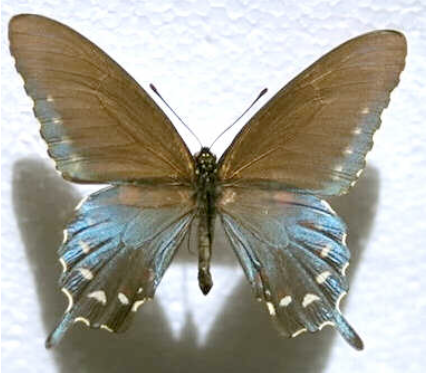March brings the early spring butterflies to the Canyon. ‘Early spring’ is a relative term, though, since this only indicates a certain optimal combination of temperature, precipitation and day length—not a particular calendar date. Therefore, early spring can mean February in Tucson, mid-April in Flagstaff and mid-March in the Grand Canyon proper. In general, as soon as temperatures are regularly above 55 F during the day, above freezing at night and nectar flowers are in bloom, butterflies will be seen in the Canyon. I documented some of the most common species and their preferred locations while I floated and camped in the Canyon.
Food and mates determine where one can find butterflies. Males and females will both of course search for nectar as soon as they emerge. However, males will also search for females and females search for places to lay eggs. Therefore, in addition to good nectar sources, females can also be found near their caterpillars’ food plants (which are often not nectar sources) and males can be found patrolling for females on hilltops (called ‘hilltopping’). Ephemeral traces of water are also excellent places to find many species of butterflies at once—look for small muddy seeps with only a trickle of water or some standing pools. These are common in early spring from the canyon walls.
March, with its highly variable weather patterns (see ‘March Weather patterns in the Canyon: Reading air like a river runner reads water’), is a risky time to emerge as an adult butterfly. You could get pelted with hail one day and cooked alive the next. However, no seasonal behavior pattern in nature is without reason. The reward of emerging in early spring is the cornucopia of food, which appears to us as a wildflower explosion. On our trip down the Canyon, the guides’ personal observations included “greenest I’ve ever seen” and “the most Brittlebush I’ve seen in ten seasons.” Brittlebush (Encelia sp.) was the most common flower in the Canyon during our run. Brittlebush is a clump of bright yellow asters set against a grey-green leafy bush, and is an excellent nectar source for butterflies. Almost all species present will gladly feed on Brittlebush, so this is a good place to start looking. Legumes like vetch and lupine are also good, and these start blooming during the rise and fall of the Canyon’s Brittlebush boom.
The most common species in the Canyon was the Painted Lady (Vanessa cardui). Painted Ladies migrate up from Mexico every spring, and are seen in large numbers throughout the Southwest by March. Their larval foodplants include mallows, thistle and fiddleneck (Brock & Kaufman 2003). The next most common was the Mourning Cloak (Nymphalis antiopa). It is a common riparian species, and in the Grand Canyon it seems to linger over water and around tamarisk, which has taken over most riparian areas. Its larval foodplants include willows and cottonwoods. Cottonwoods are common in side canyons and willows are present along the river, though they are being outcompeted by tamarisk (for more on this, see Infalt 2005 and King 2005 in this website). Other species often seen flying directly above the river were two often-confused royals: the Monarch (Danaus plexippus) and the Viceroy (Limenitis archippus). The Viceroy is slightly smaller, has a black bar across the upper hindwing and is more brownish overall than the Monarch.

Other sightings included: Buckeye (Junonia coenia), California Tortiseshell (Nymphalis californica), Fulvia Checkerspot (Thessalia fulvia), Desert Orangetip (Anthocharis cethura), Checkered White (Pontia protodice), Common Skipper (Pyrgus communis), Dainty Sulphur (Nathalis iole), Orange Sulphur (Colias eurytheme), Pipevine Swallowtail (Battus philenor) and Indra Swallowtail (Papilio indra ssp kaibabensis). The latter two are easily confused, because the Grand Canyon subspecies (kaibabensis) of Indra Swallowtail is almost entirely black, as are Pipevine Swallowtails. Looking closely though, the Indra can be distinguished because it retains the red hindwing spots and yellow forewing marginal band of other Papilio spp. Battus spp have neither of these markings—they are entirely black with iridescent blue upper hindwings.

The season was still too early for many Canyon butterflies to be out, and bad weather prevented complete observation of all present species. Observed diversity was fairly low but numbers of some species (Ladies and Mourning Cloaks) were high.
Favorite butterfly guide:
Brock, J.P. & K. Kaufman. 2003. Kaufman Focus Guides: Butterflies of North America. New York, NY: Houghton Mifflin.
